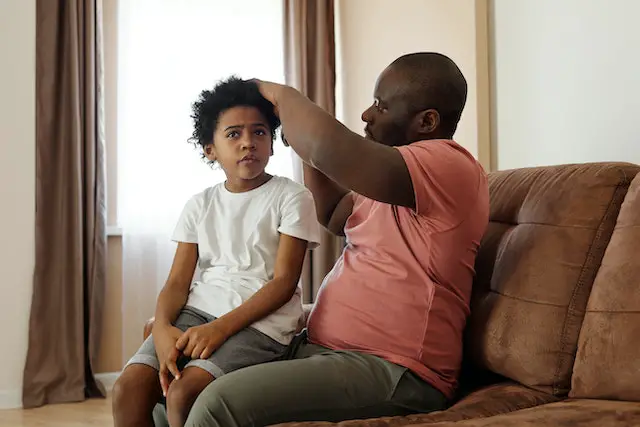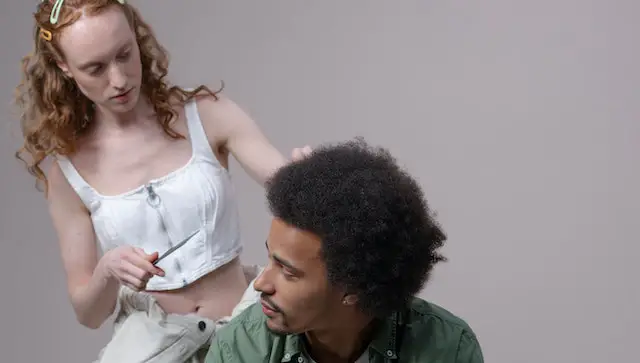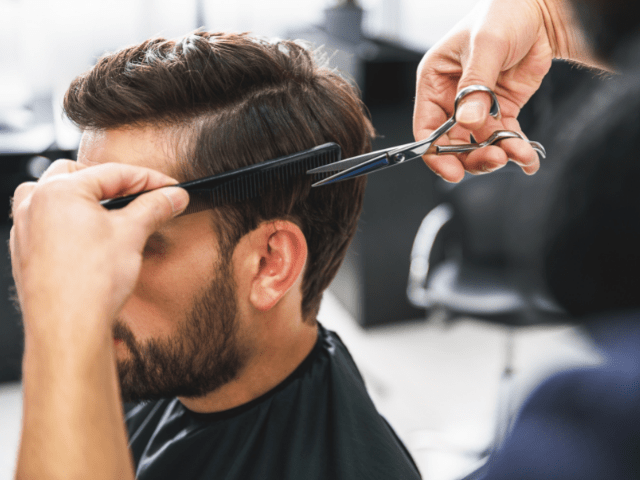Cornrows are a timeless and classic hairstyle that has been embraced by various cultures, particularly within the African community. This protective hairstyle not only exudes elegance but also helps keep natural hair moisturized and protected from daily wear and tear.
If you want to learn how to braid cornrows and show off your creativity with this versatile hairstyle, follow this step-by-step guide. You will achieve a stunning and neat cornrow hair-do on your own hair or someone else's.
Page Contents
Getting Started With The Braiding Process
Whether you want to braid your own hair or that of someone else, the process is the same. Below we give you the simple steps to follow.
Step 1: Clean and Detangle Your Natural Hair
Before you begin the cornrowing process, ensure that your Afro is clean and well-moisturized. Wash it with a gentle sulfate-free shampoo and condition it thoroughly. Once you've rinsed out the conditioner, pat your hair dry with a clean towel until it's damp, but not dripping wet.

Having damp hair makes the detangling process easier and helps prevent unnecessary breakage.
Ensure that you use a detangling brush or comb and use a detangling product such as a leave-in conditioner. The slip helps to reduce friction and makes it easier to detangle knots and tangles. Be gentle and patient when doing this. Avoid pulling or tugging aggressively, as this can lead to breakage and damage.
Step 2: Section Your Hair
Divide your hair into sections to make the cornrowing process more manageable. You can create multiple sections using a tail comb or your fingers, depending on your hair's thickness and the desired cornrow hairstyle.

Step 3: Start Cornrowing
Begin the cornrowing process by selecting a section of hair at the front or back of your head, whichever you prefer. Take a small bunch of strands from the selected section to serve as the middle strand of your braid. Hold this middle piece between your fingers securely.
Step 4: Add Hair to the Middle Strand
With the middle piece secured between your fingers, take a small section of hair from the outer edge of the selected section and add it to the middle piece. This newly added hair will become part of the middle section for the next step.

Step 5: Braid the Hair
Now that you've added more hair to the middle piece, begin braiding. Cross the left strand over the middle piece, and then cross the right strand over the new middle strand. This creates the first stitch of the cornrow.
Step 6: Continue Adding Hair
As you continue braiding, repeat the process of adding hair to the middle piece before crossing the left and right strands over it. This will gradually create the Cornrow effect.
Make sure to maintain consistent tension while braiding to keep the cornrows neat and even.
Step 7: Add Hair To Desired Length
Continue adding hair to the middle strand and braiding until you reach the end of your hair section or the desired length of the cornrow. Secure the end of the cornrow with a small elastic or a rubber band.
Step 8: Repeat the Process
Move on to the next section of hair and repeat the cornrowing process until all sections of your head are styled into neat cornrows.
How to Maintain and Protect Your Cornrow Style
Maintaining and protecting your cornrow's protective style is essential to ensure its longevity and keep your hair healthy. Here are some tips to help you care for your cornrows:
- Keep Your Scalp Moisturized: Regularly moisturize your scalp with a lightweight oil or leave-in conditioner. Afro hair tends to be dry, and keeping your scalp moisturized will prevent itchiness and flakiness.
- Avoid Over-Manipulation: Try to avoid excessive touching, pulling, or tugging on your cornrows. Over-manipulation can lead to frizz and cause your cornrows to come undone prematurely.
- Sleep with a Satin or Silk Scarf or Pillowcase: Before going to bed, wrap your hair in a satin or silk scarf or use a satin or silk pillowcase. These materials cause less friction than cotton, reducing the risk of frizz and preserving your cornrows.
Keep your hairline moisturized because it’s prone to dryness and breakage, so pay extra attention to protecting it. Use a light oil or hair cream to keep the hairline hydrated.
- Wash Your Scalp and Hair Gently: While you have cornrows, focus on washing your scalp and roots carefully. Dilute your shampoo with water and use a small applicator bottle to apply it directly to your scalp. Massage your scalp gently and rinse thoroughly.
Avoid vigorous rubbing when washing cornrowed hair to prevent frizz and to keep the style neat for as long as possible.
- Avoid Heavy Styling Products: Heavy styling products can cause buildup on your scalp and weigh down your cornrows. Stick to lightweight oils or serums to keep your hair moisturized without leaving a greasy residue.
- Schedule Regular Maintenance: Cornrows can last for several weeks, but as new hair growth occurs, the style may start to look less neat. Schedule regular touch-ups with a professional stylist to keep your cornrows looking fresh and tidy.
- Protect Your Cornrows during Physical Activities: When participating in sports or physical activities, protect your cornrows by wearing a headband or wrapping your head with a scarf. This will help prevent sweat from loosening the braids.
- Avoid Tight Cornrows: While cornrows should be secure, they should not be too tight. Tight cornrows can cause tension and lead to hair breakage, so ensure your stylist braids your hair with comfortable tension.
- Remove Your Cornrows Properly: When it's time to remove your cornrows, do so gently and with care. Use a detangling spray or light oil to help ease the removal process. Avoid cutting or pulling excessively, as this can cause detangled hair that'll get damaged.
By following these maintenance and protection tips, you can ensure that your cornrows look great and your hair remains healthy throughout the duration of your chosen cornrow style. Remember, a little care goes a long way in preserving your hair and keeping it beautiful.
Conclusion
In conclusion, cornrows are a fantastic protective style for Afro hair. With the right technique and some practice, you can create stunning cornrow styles that showcase your creativity and keep your natural hair healthy and beautiful.
Remember to start with clean, damp, and detangled strands, and be patient as you braid your way to stunning and neat cornrows. Happy braiding!
FAQs
Can I braid my own hair?
Yes, you can if you have a mirror and a lot of patience. Use it to create neat lines that'll allow for beautiful cornrows.
It is possible to braid cornrows on naturally straight hair?
Yes, it's possible if your hair is long enough. The main tactic for creating cornrow hair is the ability to fully grip each strand of hair, so if your hair is long enough, it is possible.
How long should I keep my cornrows?
This is all about personal preference, but you can keep them for up to 8 weeks if they are well-maintained. Make sure to wash your hair and moisturize it regularly while you are braided.




